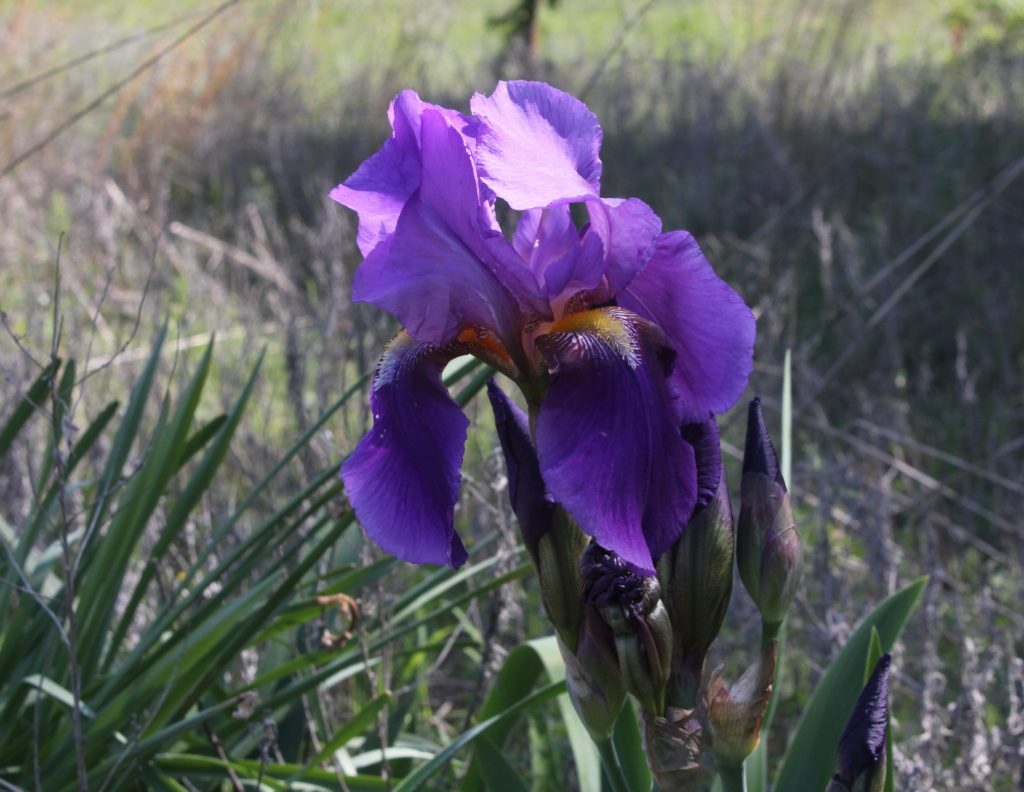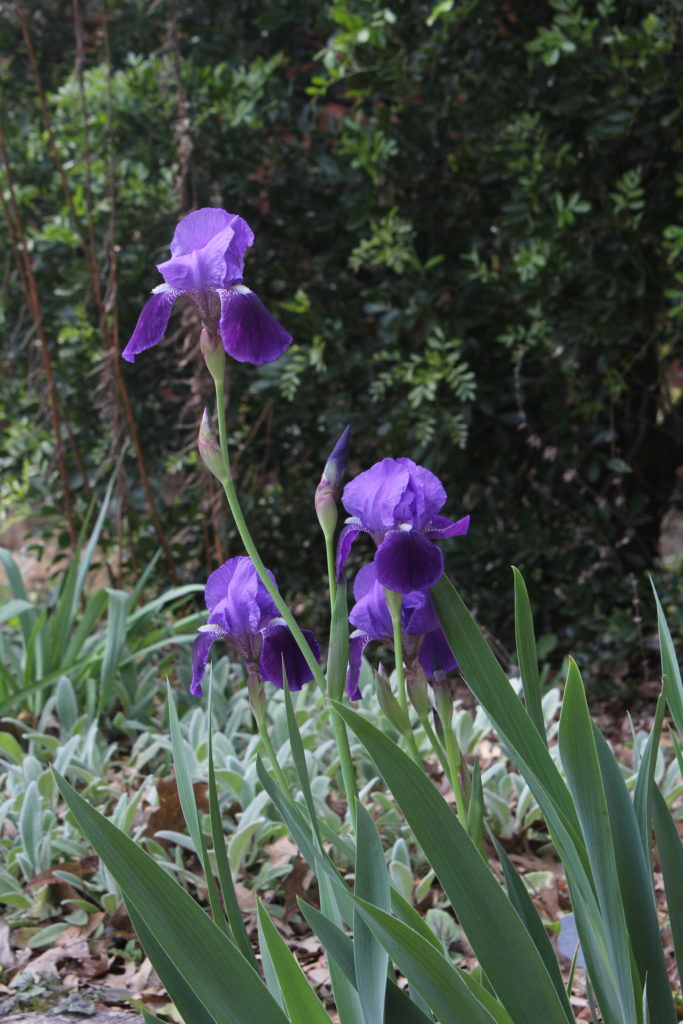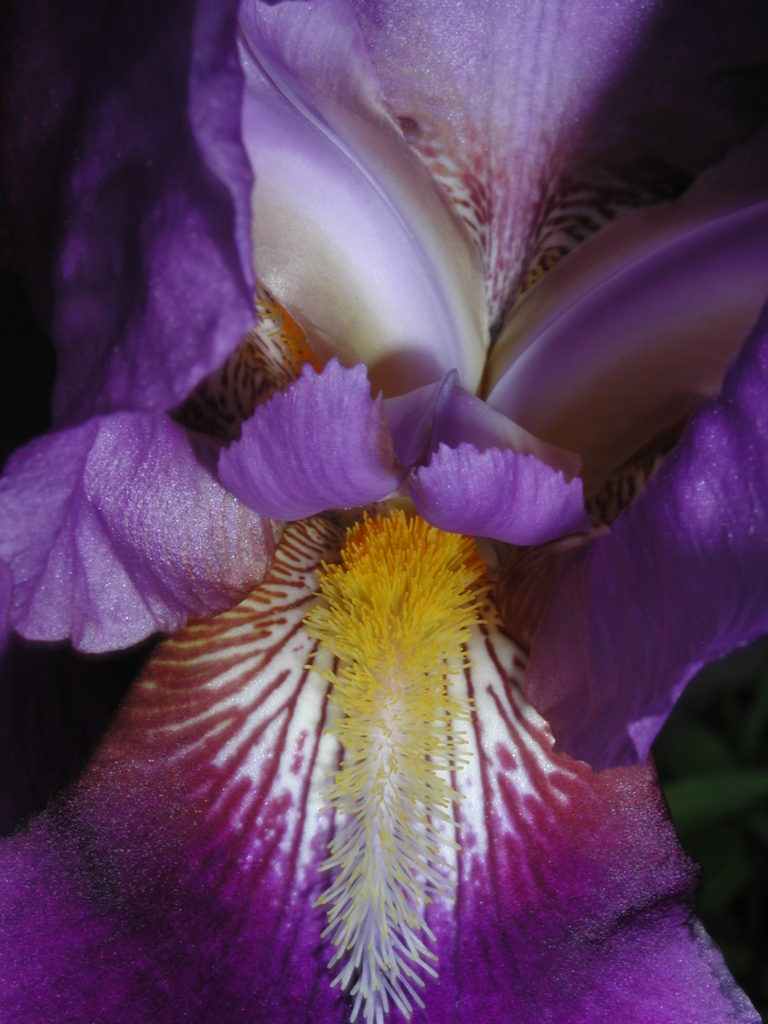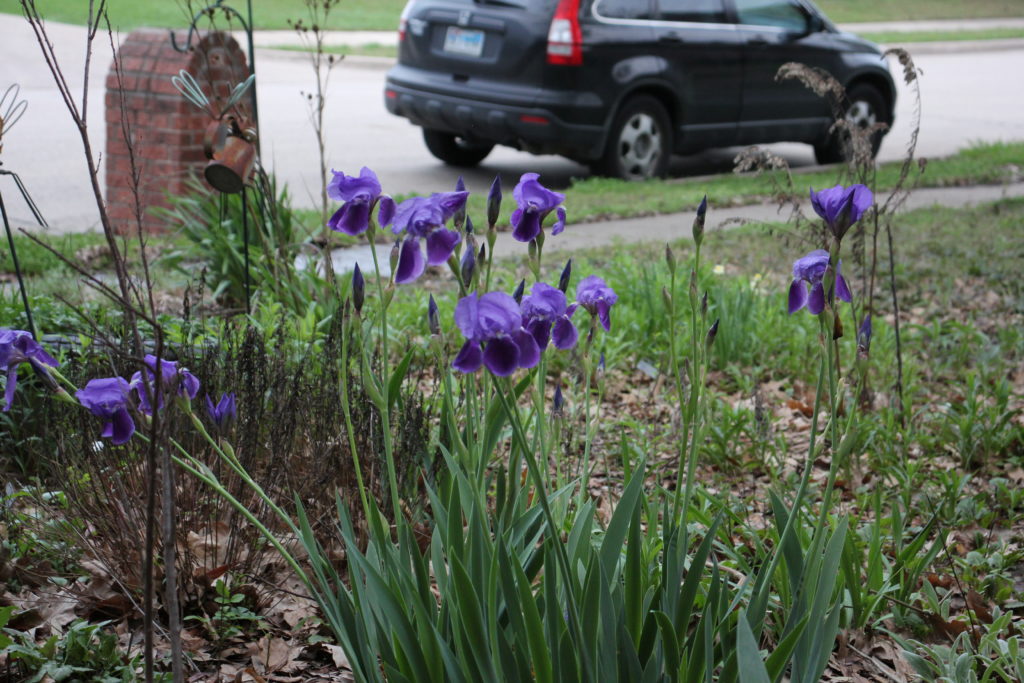My yard at home is very small. It’s not like the acreage I get to play with at the farm/refuge. Decades ago, I made the decision that everything that goes into my small yard has to do more than one thing for me, or it doesn’t get space. Just having a pretty face doesn’t cut it around here.

Simply looking good counts as one thing. If it serves bees, birds, butterflies, or other animals, each one of those services counts as one thing. Looking good in multiple seasons, like having a spring bloom and pretty fall foliage, can count as more than one thing. Being water-wise—of special importance in North Texas—counts as one thing. Being edible counts as one thing.
There’s one more point category that a rigorous ideologue might never include—sentimental value. If a plant has been passed along from someone I love, or has a family history, or reminds me of certain people and time spent in their gardens, then it has sentimental value to me, and that counts as one thing in my scoring scheme, so some plants that are simply beautiful and have sentimental value are admitted as participants in my small yard (That’s two things!)

One of those plants is Grandmother’s Iris. It’s an old fashioned Bearded Iris that’s been in the family a long time. It’s not native, but Bumblebees do like it (Okay, three! Three things!). It’s foliage, upright fans of flattened blue-green swords, provides a nice texture and color contrast to plants with more ordinary structure and color, and looks good even when the plant isn’t blooming (Okay, four! Four things!)

The cool thing about Grandmother’s Iris is its travel history. My husband’s mother dug this stately purple Iris from her Mother’s extensive Iris garden in Fayeteville, Arkansas. It was her favorite and the oldest of the Irises there. It might have come from their home in Fort Smith before it went to Fayetteville to live. Bearded Irises create rhizomes that run sideways near the soil level and sprout new leaves, cloning themselves as they go, so it’s not hard to dig up a piece and move it, and the plant that gets moved is just like its parent plant. The stored nutrition in those rhizomes makes them pretty tough and resistant to transplant shock, so even a beginning gardener can transplant a Bearded Iris.

My Mother-in-law took her piece of this family treasure to Bedford, Texas, where it grew for many years. When I came along and married into the family, I was given a piece to take home to New Jersey and plant at our home there. We flew, and the pass-along plant was securely nestled in the center of the suitcase between layers of clothing. For ten years it thrived in New Jersey, but at the same time, the clump in my Mother-in-law’s garden was in decline due to too much shade and a busy family schedule with no time for gardening.

So, when we moved back to Texas, I brought pieces with me—some to save for us, and some to restore my Mother-in-law’s plantings. She held them in her garden in Bedford until we were able to make a place for them at our brand new home in North Texas, and she kept some for herself, moving them around the yard for better sunlight when yard conditions changed.
These Irises have grown in my yard for twenty three years now, and also at our farm. When it came time to settle the estate of my husband’s parents and sell the house he grew up in, there were enough Irises still there to share out with other family members. Grandmother’s Irises now grow in new places, given to friends and family who remember my Mother-in-law and wanted a piece of something that was special to her. To some, it might just be a pretty flower, a one trick pony, but to me, there is hidden value in this plant, and I’ll continue to love it each year as it blooms because it was special to her. I acknowledge its rightful place in the yard even when it’s not in bloom. It has passed the test. It makes me smile.

These days, my garden is composed mostly of native plants, but I look forward each year to Grandmother’s Iris blooming.
What do you require of your plants? Do you rank your plants? Score their usefulness? Or, do you just buy whatever appeals on a momentary whim? There’s no right or wrong answer—only something to think about as you garden.
Late arriving information! My sister-in-law got curious, and may have found the cultivar namke for this antique Iris–‘William A. Setchell‘
See more on this Iris here: https://www.historiciris.org/listings/william-a-setchell/?fbclid=IwAR1CBjoJr-mEml2RKrPGS-wGJ5TybwtmoVGKv-EGSNb6MN_1LlBzuSkGSWU